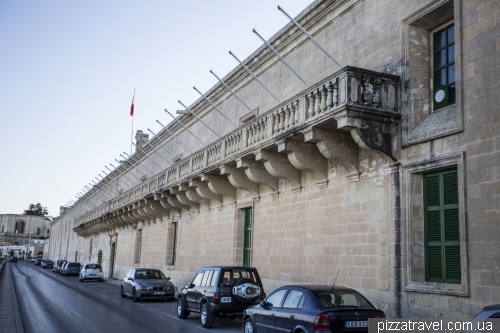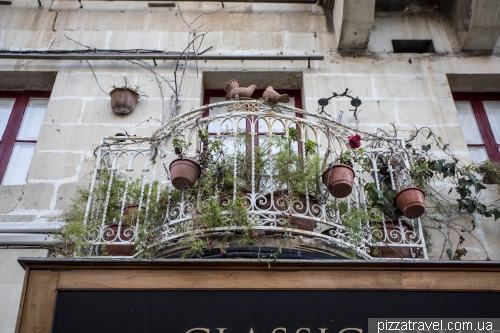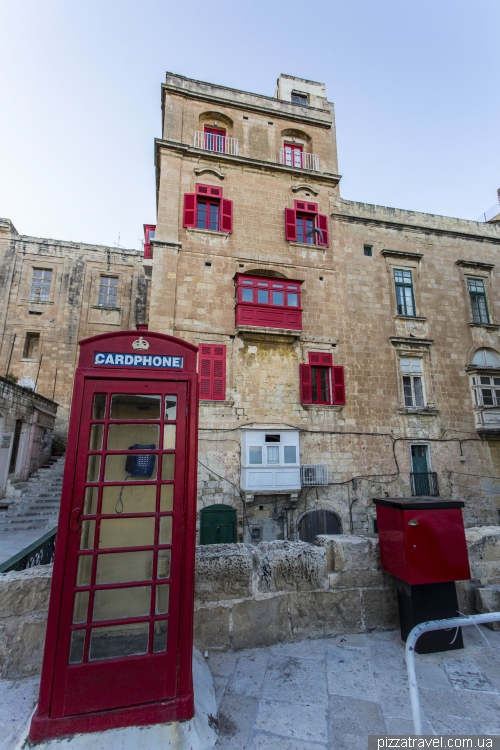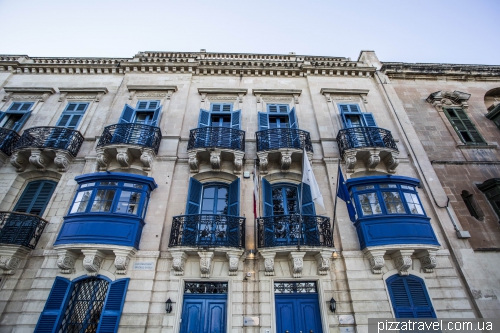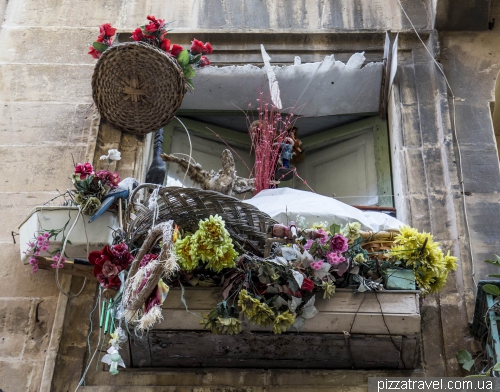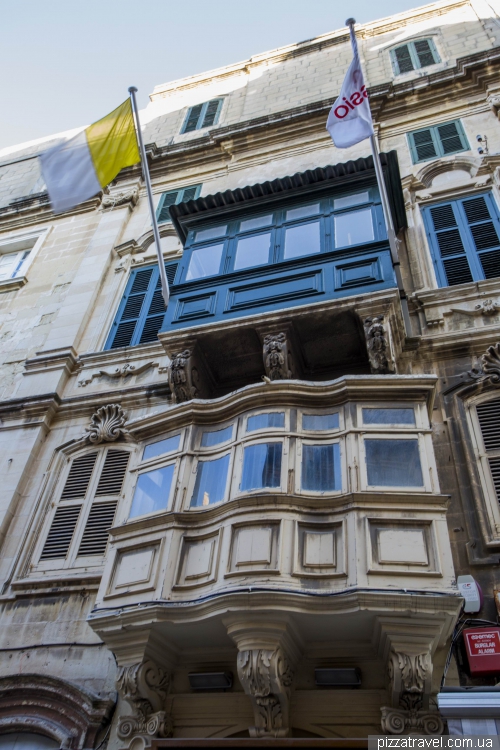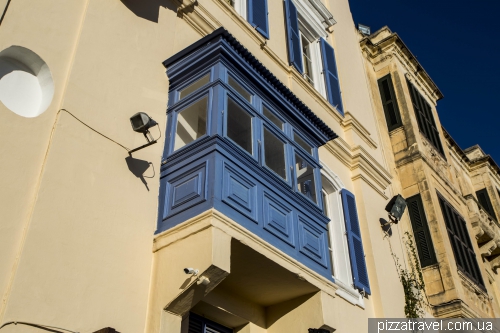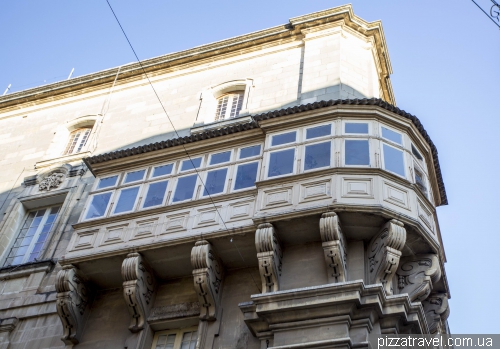At that time they played the role of the status indicator, the most beautiful can be seen now on the palazzo's on the main street. In case of Valletta it was also another reason for construction of balconies. Knight's Order issued a decree according to which all the houses in the city have to decorate the corners. So, people started to use balconies as decorations, instead of religios sculptures.
Almost all old balconies have special pillars at the bottom (called saljaturi), often decorated with beautiful ornaments and sculptures. Owners chose between positive characters such as flowers
Or negative, such as dragons and scary faces. At that time it was believed that these sculptures can scare away bad people from your house.
Despite so many different kinds of balconies, they can be divided into two main categories: open stone and closed wooden. The first ones can be mostly found in small towns and Mdina, while wooden balconies are in Valletta.
Malta has a lot of stone and few trees, so it is logical that the wooden balconies were built by wealthy citizens who lived in Valletta. The most striking examples of stone balconies can be found on the island of Gozo, which is famous for stone masters. Although this type can be found in the capital too.
Wooden balconies began to appear in Valletta in the middle of the 18th century. People started to built them after contruction of two large wooden balconies in the Palace of the Grand Master. They were so popular, that even abroad this type of balconies became known as La Maltijja ("Maltese"). In fact, this design came from North Africa, mainly from Morocco, and was brought to Malta by slaves.
In recent decades houseowners very often disassemble the classic wooden balconies, especially in the private sector on the island of Gozo. Therefore, government decided to award grants to owners of such balconies to restore and maintain the cultural heritage.





